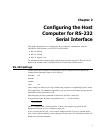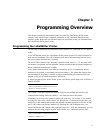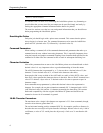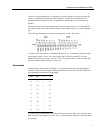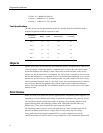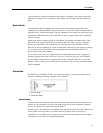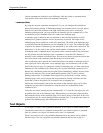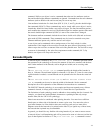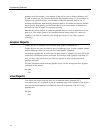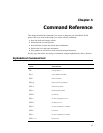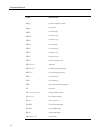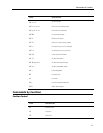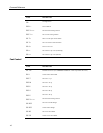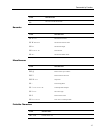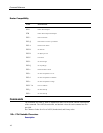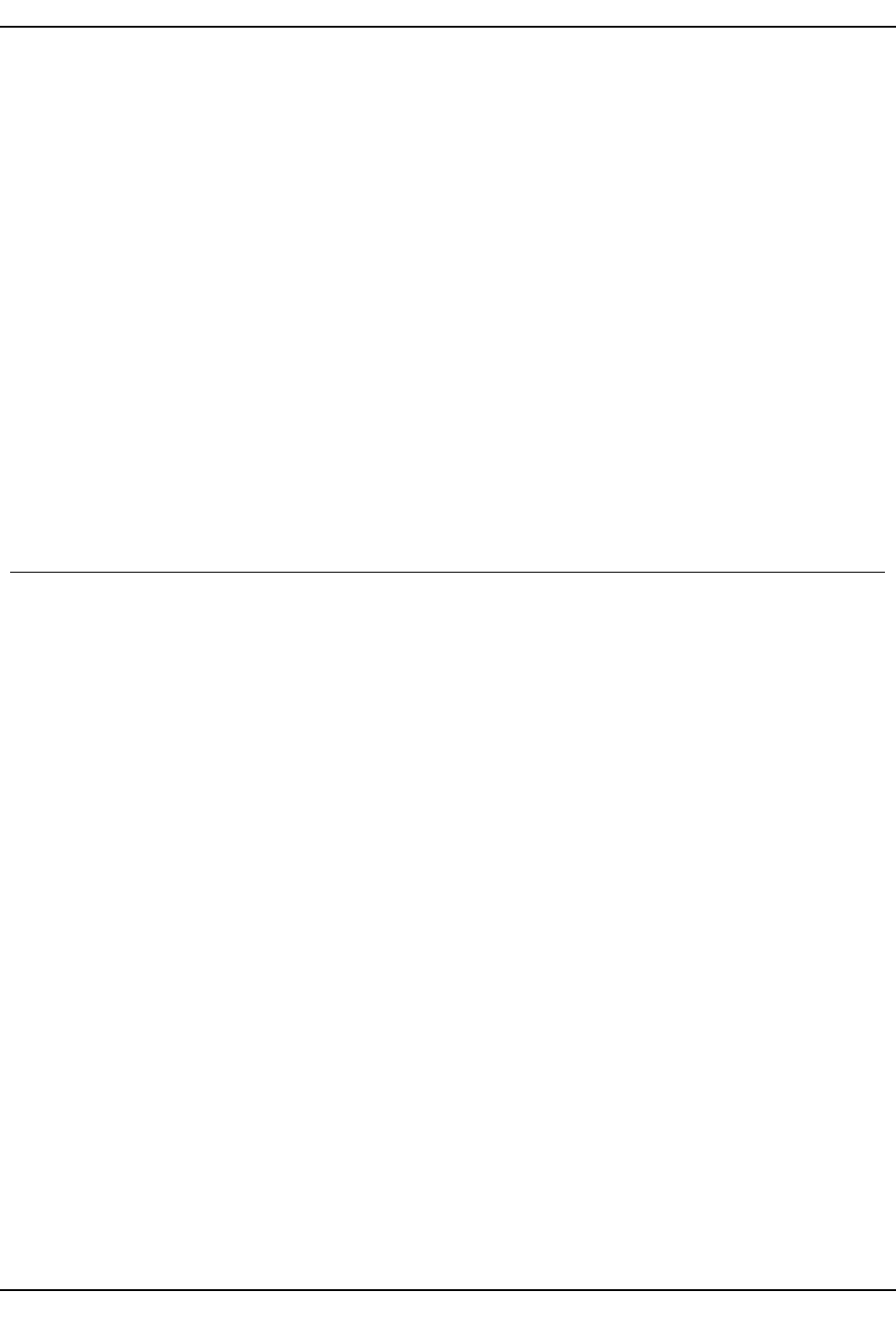
Barcode Objects
command. While a text object is active, commands that alter text line attributes (such as
font and double-height character commands) are ignored. Commands that alter text character
attributes (such as double wide and inverse) may be sent at any time.
Line attributes include the five basic fonts (ESC S, P, M, U, and T), plus the double-height
font command (GS DC2). These commands may not be issued while a text object is active;
instead they should be issued before a text object is begun. The font line attribute persists
until another font command is received. The double-height line attribute persists either until
the cancel double-height command (GS DC3) is sent or the current font is changed.
The character attribute commands include the set font to double wide (SO) and set inverse
print mode (GS RS) commands. These commands may be issued or canceled at any time.
Character attributes persist only until the end of a text object.
A text object can be terminated with a carriage return, a line feed, or both, in either
combination. If the length of the text object exceeds the space allowed for printing, it will
either wrap to the next line or truncate at the end of the printable area. The decision to wrap
or truncate is determined by the select line wrap/truncate mode command (GS T). By
default, text objects will wrap to the next line.
Barcode Objects
A barcode object is created by the print barcode (GS k) command. Specified within
the command is the symbology to be used, the amount of data to be encoded, and the data
itself. Other attributes of the barcode, such as height and width, can be set using other
commands.
The set barcode height (GS h) command specifies the height of the barcode in
dots, or 1/8th mm. The maximum height for a barcode is 256 dots, or 32 mm. In cases where
a taller barcode is needed, a second barcode can be printed below the first at the same left
offset.
The set barcode module width (GS w) and set barcode element width
(GS W) commands can be used to alter the width of the barcode. See the command
descriptions for a full explanation of the differences between these two commands.
The POSTNET barcode symbology is an exception and does not respond to any of these
commands. Instead, it always prints within the U.S. Postal Service’s specifications.
The limitations of each symbology must be adhered to when sending data for a barcode. For
example, you should not send alphabetic characters to symbologies that only accept
numeric data (like the UPC/EAN symbology).
Other items must also be considered when printing barcodes. You must leave sufficient
blank space on either side of the barcode to create a quiet zone. You must also select a
good ratio/element size if the default values are not being used, and you must allow
adequate room for the barcode to be printed on the label. If you ignore any of these items,
the barcode that is printed may be unreadable.
In general, you should be very familiar with using barcodes if you want to ensure success.
A barcode object is self-terminating and will be processed as soon as it has received the last
byte of data required to define to it. The print barcode (GS k) command’s second
11



